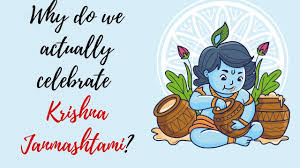
THE LEGENDS AND STORIES BEHIND NAG PANCHAMI
Nag Panchami, a festival celebrated with great fervor in many parts of India, is rooted in fascinating legends and rich cultural traditions. This auspicious day is dedicated to the worship of snakes, which are considered sacred in Hindu mythology. One of the most well-known stories associated with Nag Panchami comes from the epic Mahabharata.
The Legend from the Mahabharata
King Janamejaya, the son of Kuru King Parikshita, decided to avenge his father's death, who had been killed by Takshaka, the king of snakes. To accomplish this, he initiated a massive snake sacrifice called Sarpa Satra. During this yagna, a group of brahmins chanted powerful incantations around a sacrificial fireplace, drawing snakes from all corners into the fire.
However, Takshaka, aware of the threat, sought refuge in the netherworld, coiling himself around the cot of Lord Indra. The brahmins, realizing that Takshaka was beyond their reach, intensified their chants to such an extent that they began to pull even Indra towards the sacrificial fire. Alarmed by this turn of events, the gods turned to Manasadevi for help.
Manasadevi, the goddess of snakes, sent her wise and knowledgeable son, Astik, to intervene. Astik approached the yagna and impressed King Janamejaya with his profound wisdom. As a boon for his wisdom, Astik requested the king to stop the yagna, thereby sparing the lives of Takshaka and Indra. This significant event occurred on the day of Nadivardhini Panchami, which later came to be celebrated as Nag Panchami.

Celebrations and Rituals
In urban areas, where access to temples or snake burrows is limited, devotees often use idols and figurines of Lord Shiva to perform their rituals. Here are some of the common practices and observances for Nag Panchami:
Preparations and Worship
- Cleaning and Decorating: Devotees start the day by cleaning their pooja ghar (prayer room) meticulously. They then decorate it with flowers and other auspicious items.
- Bathing the Deities: Many people bathe the Shiva statue or Shivalinga in milk, symbolizing purity and devotion.
- Fasting and Mantras: Observing a fast on this day is common. Devotees recite specific mantras dedicated to the serpent gods, seeking their blessings and protection.
- Offerings: Serpent gods are worshipped with offerings of milk, sweets, and flowers. These offerings are believed to appease the snake deities and ensure their favor.
Dos and Don’ts
- Avoid Ploughing: It is advised not to plough the land on this day to prevent harming any snakes that might be dwelling underground.
- Preserve Trees: Cutting trees is discouraged, as they might be home to snakes.
- Cooking Restrictions: Cooking in iron vessels is avoided on Nag Panchami, following traditional beliefs.

Embracing Devotion with Attire
To celebrate Nag Panchami, you can also reflect your devotion through your attire. Wearing clothing that honors Hindu deities can enhance your spiritual connection and showcase your faith. Consider donning:
- Hanuman T-shirts: Symbolize strength and devotion.
- Ganesh T-shirts: Represent wisdom and new beginnings.
- Krishna T-shirts: Reflect love and divine playfulness.
- Ganpati T-shirts: Celebrate the beloved elephant-headed god.
- Anjaneya T-shirts: Honor Hanuman in his childhood form.
These T-shirts not only express your faith but also connect you to the cultural heritage of Hinduism.
Conclusion
Nag Panchami is a time to honor the sacredness of snakes and seek their blessings. Through the rich legends of the Mahabharata and the heartfelt rituals performed on this day, devotees reaffirm their respect for nature and the divine. Whether through traditional worship or wearing devotional attire, celebrating Nag Panchami can deepen your spiritual experience and connection to Hindu mythology.
[The images used in this blog post are not owned by Anime Devta, they are just for entertainment purposes]
| NAG PANCHAMI | LORD SHIVA | HINDU T SHIRT | SHIVJI T SHIRT | HANUMAN T SHIRT | GANESH T SHIRT | KRISHNA T SHIRT | RAM T SHIRT | BAJRANG BALI T SHIRT | HINDU MYTHOLOGY |
~Mimansa Sharma

